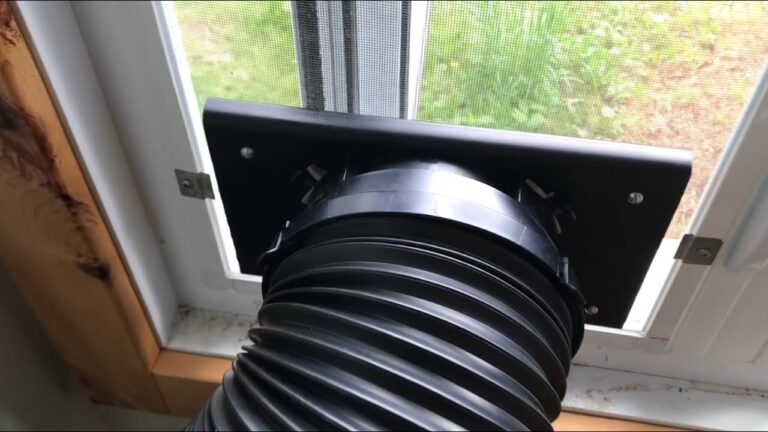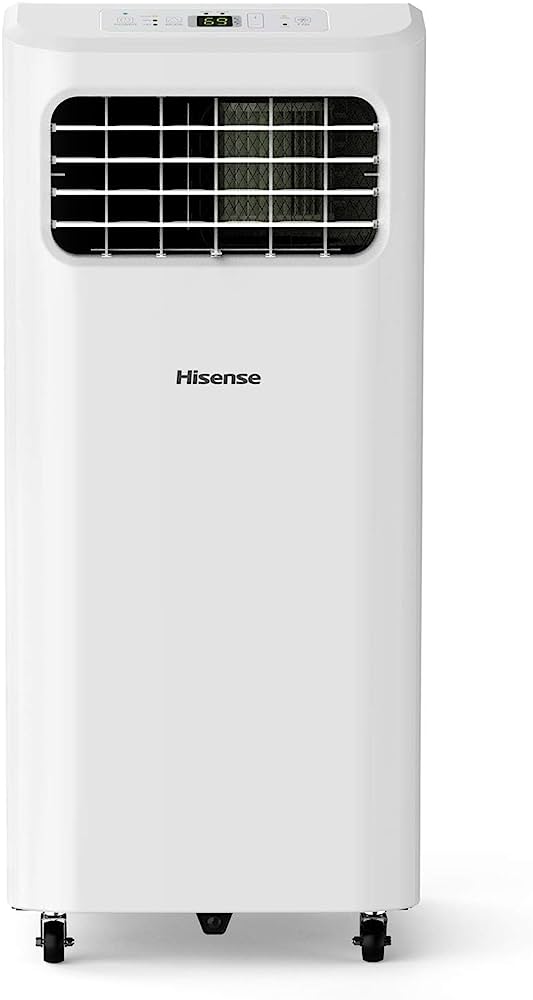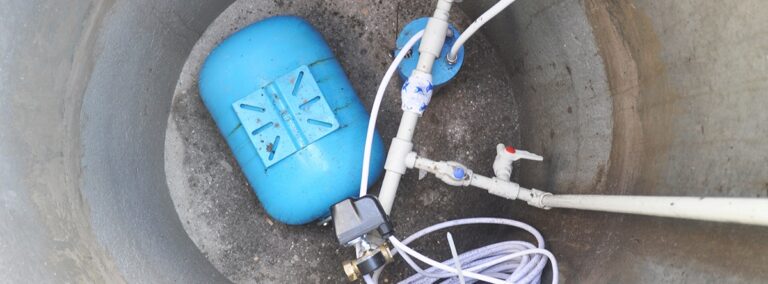Why Does My AC Keep Going Into Recovery Mode? Troubleshoot Now!
Your AC keeps going into recovery mode due to incorrect thermostat settings or a malfunctioning system component. Ensure your thermostat is programmed correctly and check for any system issues.
Air conditioning systems sometimes enter recovery mode to maintain optimal comfort and efficiency. This mode activates when the thermostat detects significant temperature variations or during scheduled programming changes. Recovery mode ensures the AC system gradually adjusts to the desired temperature, preventing excessive energy consumption.
It can also indicate potential problems with the system, such as sensor malfunctions or low refrigerant levels. Regular maintenance and correct thermostat settings help avoid unnecessary recovery mode activations. Understanding why your AC enters recovery mode can save energy and maintain a comfortable indoor environment.
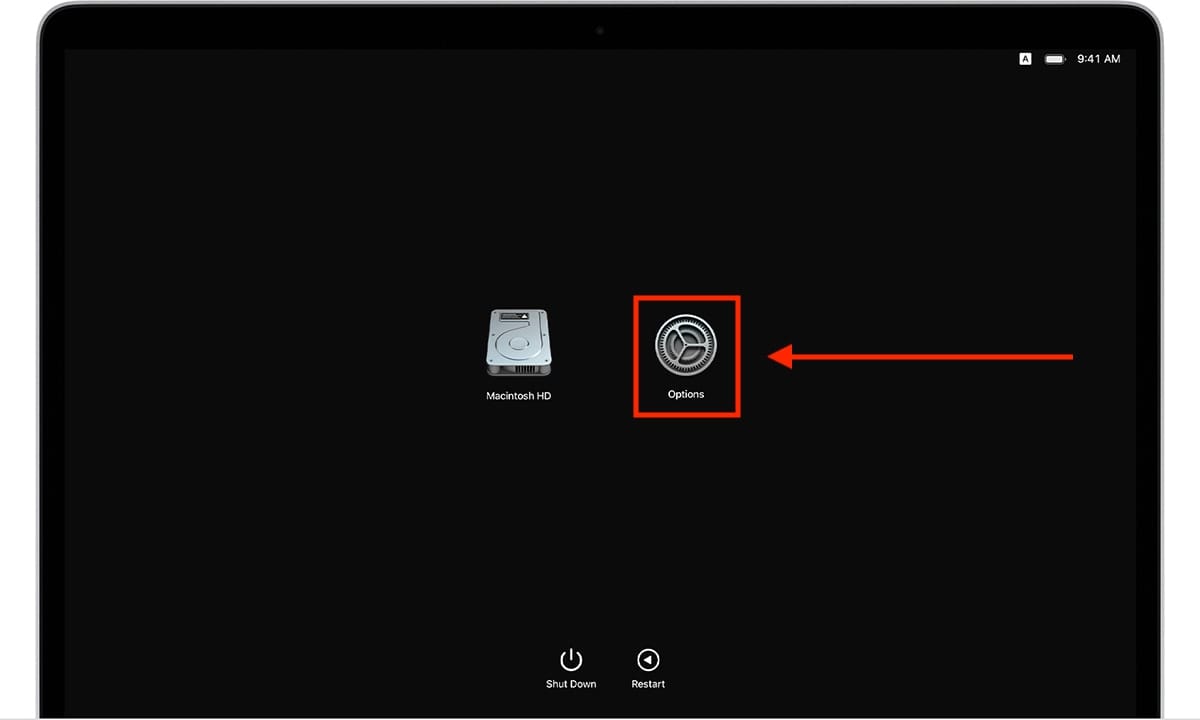
Credit: eshop.macsales.com
Common Causes
Is your AC constantly switching to recovery mode? Understanding the common causes can help you address this issue. Here are the most frequent reasons why your AC might be doing this.
Thermostat Settings
Your thermostat settings might be the culprit. Incorrect settings can confuse your AC system. Make sure your thermostat is set to the correct mode. Use the “Auto” mode to maintain a comfortable temperature. Avoid setting the temperature too low.
- Check the thermostat mode.
- Ensure the temperature is not too low.
- Verify the fan settings.
Power Fluctuations
Power fluctuations can also cause your AC to go into recovery mode. Sudden power surges or drops affect the system’s functionality. Ensure your home has a stable power supply. Consider using a surge protector for your AC unit.
| Power Issue | Solution |
|---|---|
| Surge | Use a surge protector. |
| Drop | Check home power supply. |
Keep these common causes in mind to prevent your AC from switching to recovery mode frequently.
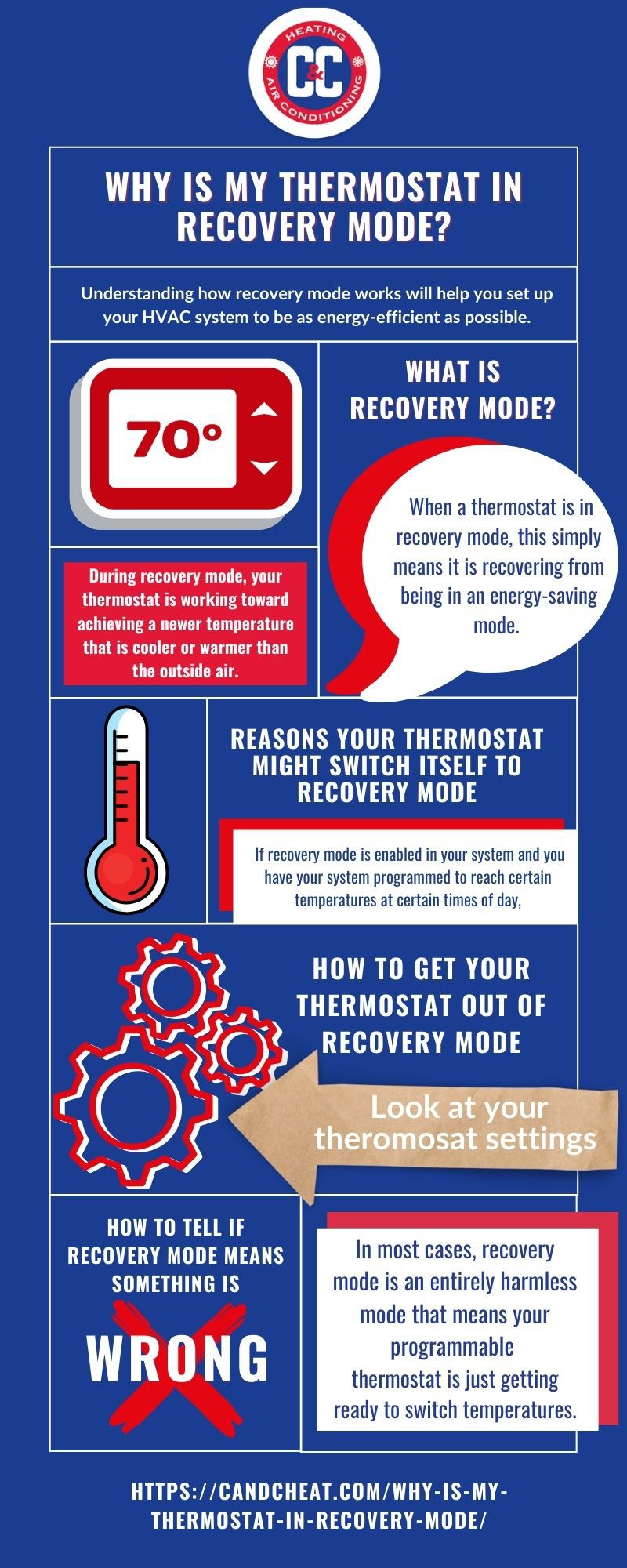
Credit: candcheat.com
Thermostat Issues
Your air conditioner going into recovery mode can be frustrating. Often, the thermostat is to blame. Understanding thermostat issues can help you solve the problem. Let’s dive into some common thermostat issues.
Incorrect Programming
Incorrect programming is a common cause of recovery mode. Check your thermostat settings. Ensure the temperature is set correctly. Misconfigured settings can trigger recovery mode. Review the user manual for proper settings.
- Check temperature settings
- Review user manual
- Adjust program schedules
Dead Batteries
Dead batteries can cause thermostat issues. Replace the batteries regularly. Low batteries can trigger recovery mode. Use high-quality batteries for best performance.
| Battery Type | Recommended Frequency |
|---|---|
| AA Alkaline | Every 6 months |
| AAA Alkaline | Every 6 months |
Check the battery compartment for corrosion. Clean it if necessary. A clean compartment ensures good contact.
- Remove old batteries
- Inspect battery compartment
- Clean any corrosion
- Insert new batteries
Dirty Air Filters
Dirty air filters can make your AC go into recovery mode. The filter’s job is to keep dust and dirt out of the air. But, when it gets dirty, it can’t do its job well. This can lead to a number of issues, including the air conditioner going into recovery mode.
Reduced Airflow
When an air filter is dirty, airflow is reduced. This makes the AC work harder to cool your home. The system can overheat and go into recovery mode. Overheating is not good for the AC and can shorten its lifespan.
Here are some problems caused by reduced airflow:
- Overheating of the AC system
- Inefficient cooling
- Increased energy bills
Filter Replacement
Replacing the air filter can solve many of these problems. You should check the filter every month. If it’s dirty, replace it right away.
Follow these steps to replace the filter:
- Turn off the AC unit
- Locate the filter compartment
- Remove the old filter
- Insert a new filter
- Turn the AC unit back on
A clean filter helps the AC run smoothly. It also improves the air quality in your home.
Refrigerant Levels
Refrigerant levels play a crucial role in your AC’s performance. Low refrigerant can cause your AC to go into recovery mode. This happens because the system cannot maintain the set temperature. Proper refrigerant levels ensure efficient cooling.
Leak Detection
Leaks in the system can cause refrigerant levels to drop. Finding these leaks is important for maintaining your AC. Common signs of a leak include:
- Hissing sounds
- Oil stains around the unit
- Decreased cooling performance
Recharging System
Recharging the system restores the refrigerant to proper levels. This process involves:
- Identifying the type of refrigerant used
- Connecting gauges to measure current levels
- Adding refrigerant until optimal levels are reached
Sensor Problems
Your AC going into recovery mode can be frustrating. One common cause is sensor problems. Sensors play a crucial role in monitoring your AC. They ensure it operates efficiently. Faulty sensors or calibration issues can disrupt this. Let’s dive into some common sensor problems.
Faulty Sensors
Faulty sensors can send incorrect signals to your AC. This leads to your AC entering recovery mode. Sensors might get dirty or damaged over time. Dirty sensors can misread temperature levels. Damaged sensors might stop working altogether. Both issues can confuse your AC system.
To fix this, inspect your sensors regularly. Clean them using a soft cloth. Replace damaged sensors as soon as possible. Regular maintenance prevents faulty sensor problems.
Sensor Calibration
Sensor calibration is vital for accurate readings. If sensors are not calibrated, they give incorrect data. This can cause your AC to enter recovery mode. Calibration ensures sensors measure temperature correctly.
You can calibrate sensors manually or automatically. Manual calibration involves using a thermometer. Compare readings and adjust the sensor. Automatic calibration uses built-in software. Follow the manufacturer’s instructions for this.
| Method | Description |
|---|---|
| Manual Calibration | Uses a thermometer for accuracy. |
| Automatic Calibration | Uses built-in software tools. |
Proper sensor calibration keeps your AC running smoothly. It reduces the chances of going into recovery mode.
Electrical Problems
Your AC unit might keep going into recovery mode due to various electrical problems. These issues can disrupt the normal functioning of your system. Understanding these problems can help you troubleshoot and maintain your AC unit effectively.
Circuit Breaker Trips
A tripping circuit breaker is a common issue that can push your AC into recovery mode. This usually happens due to an overloaded circuit or a short circuit. When the breaker trips, it cuts off the power to the AC unit, causing it to reset.
Here are a few reasons why your circuit breaker might trip:
- Overloaded circuit
- Short circuit
- Faulty components
- Loose connections
Regularly check your circuit breaker for any signs of wear and tear. Ensure that the breaker is not overloaded with too many devices.
Wiring Issues
Faulty wiring can also cause your AC to enter recovery mode. Wires can become frayed or damaged over time. This can create a poor connection and disrupt the power supply.
Signs of wiring issues include:
- Burnt smell near the AC unit
- Sparking or flickering lights
- Inconsistent power supply
To avoid these problems, ensure that your AC wiring is regularly inspected by a professional. Proper maintenance can prevent these issues and keep your AC running smoothly.
Here is a simple table to summarize the electrical problems:
| Problem | Possible Cause |
|---|---|
| Circuit Breaker Trips | Overloaded circuit, short circuit, faulty components |
| Wiring Issues | Frayed wires, poor connections, inconsistent power supply |
Maintenance Tips
Understanding why your AC goes into recovery mode is crucial. Regular maintenance can prevent this issue. Below are some tips to keep your AC in top shape.
Regular Inspections
Regular inspections help identify problems early. Check the AC filters monthly. Clean or replace them when dirty. Inspect the outdoor unit for debris or blockages. Clear away leaves, dirt, and other obstructions. Ensure that vents are open and unobstructed inside your home.
Professional Servicing
Professional servicing ensures your AC runs efficiently. Schedule a professional check-up at least once a year. Technicians can find hidden problems and fix them. They will check refrigerant levels and inspect the electrical components. This prevents costly repairs and extends the AC’s life.
| Maintenance Task | Frequency |
|---|---|
| Check Filters | Monthly |
| Clean Outdoor Unit | Quarterly |
| Professional Service | Annually |
When To Call A Professional
Is your AC constantly going into recovery mode? This can be frustrating, especially during the hot months. Sometimes, the issue is too complex for DIY solutions. Knowing when to call a professional can save time and money.
Persistent Issues
If your AC keeps going into recovery mode repeatedly, it’s time to get help. Simple fixes might not work. A professional can pinpoint the problem. Don’t ignore frequent recovery mode alerts. Ignoring them can cause more damage to your system.
Expert Diagnosis
Professionals have the tools to diagnose the issue accurately. They can check for electrical problems, refrigerant leaks, and other hidden issues. An expert diagnosis ensures your AC runs efficiently. A well-maintained AC saves on energy bills and lasts longer.
| Signs You Need a Professional | Why It’s Important |
|---|---|
| Frequent Recovery Mode | Prevents further damage |
| Strange Noises | Could indicate serious issues |
| Poor Airflow | Ensures comfort and efficiency |
- Ensure to check the warranty before calling a professional.
- Look for certified technicians.
- Regular maintenance can prevent future issues.

Credit: www.macworld.com
Frequently Asked Questions
Why Does My Ac Go Into Recovery Mode?
Your AC goes into recovery mode to optimize energy use and maintain the set temperature after a power outage or system restart.
How Do I Get My Thermostat Out Of Recovery Mode?
To exit recovery mode, adjust the thermostat settings manually. Ensure the schedule is correct. Check and replace batteries if needed. Reset the thermostat to default settings if the issue persists.
Why Does My Ac Keep Needing To Be Reset?
Your AC may need frequent resets due to electrical issues, dirty filters, or faulty components. Regular maintenance can help.
Conclusion
Understanding why your AC goes into recovery mode can save you stress and money. Regular maintenance is key. Check your thermostat settings and consult professionals if needed. By addressing these issues early, you can ensure your AC runs smoothly and efficiently, keeping your home comfortable year-round.


